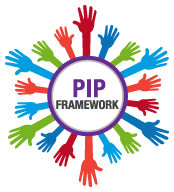WHO counts on the support of over 800 collaborating centres to do its mandated work and implement its programmes. To find out what these WHO collaborating centres are and their area of work with WHO please visit the database. You can also learn more about the WHO collaborating centres here.
Neighbouring Countries

17 - 17 July 2025
16 - 20 October 2017
Ground Crossing
Port
Airport
No Data!
Completed
2023
AMR Self Assessment
No Data!
MPC
Multisectoral Preparedness Coordination
No Data!
Joint Risk Assessment (JRA)
Universal Health Coverage
Sustainable Development Goals
SDG Target 3.b
SDG Target 3.c
SDG Target 6.2
Others
Conducted
2025
NAPHS
No Plan or Plan not publicly available
Influenza Plan
B - National AMR action plan under development.
AMR PLAN
Public Health Emergencies Preparedness
-
 PIP Framework
PIP Framework
-
To establish and strengthen influenza surveillance systems, knowledge and capacities for a timely and appropriate response to pandemic influenza
- IHR Coordination, Communication and Advocacy
- Biosafety and Biosecurity
- National Institute of Infectious Diseases (NIID)
- AFENET
- Asian Development Bank (ADB)
- Better Health Moves Humanity Forward (PATH)
- Brazil, Ministry of Agriculture, Livestock, and Supply (MAPA)
- Deutsche Gesellschaft für Internationale Zusammenarbeit (GIZ)
- Ending Pandemics
- EpiAFRIC
- EPPR
- European Union
- FAO Emergency Centre for Transboundary Animal Diseases (ECTAD)
- Fleming Fund
- French Embassy
- Fundación Maris Llorens
- Global Affairs Canada (GAC)
- International Association of National Public Health Institutes (IANPHI)
- International Federation of Biosafety Associations (IFBA)
- International Regional Organization for Agricultural Health (OIRSA)
- Japan International Cooperation Agency (JICA)
- Mekong Basin Disease Surveillance (MBDS)
- Norwegian Institute of Public Health (NIPH)
- PIP Framework
- The Service for the National Health for Food Safety and Food Quality (SENASICA)
- U.K, Department for International Development (DFID)
- U.N. Food & Agriculture Organization (FAO)
- U.S. Agency for International Development (USAID)
- U.S. Defense Threat Reduction Agency (DTRA)
- U.S. Department of Agriculture (USDA)
- U.S. Department of Defense (DoD)
- U.S. Department of State (DoS)
- U.S. National Institutes of Health (NIH)
- UK Health Security Agency (UKHSA)
- United Nations Children's Fund (UNICEF)
- United States Centers for Disease Control and Prevention (U.S. CDC)
- World Bank
- World Health Organization (WHO)
- World Organisation for Animal Health (WOAH)
AMR support activities
- Epidemiology/Surveillance
- Data Management/IT
- Technical Support
- Capacity Building
- Knowledge Exchange